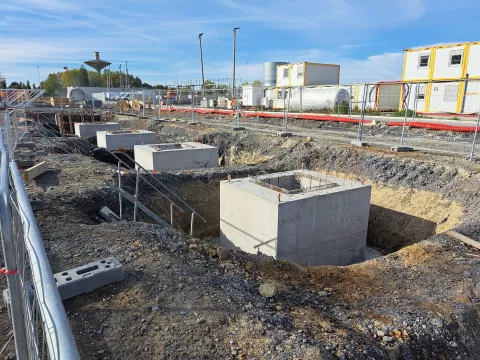Construction work kicks off on Block 2 of the Billy-Berclau Douvrin Gigafactory

To become a major player in the production of cells for electric vehicle batteries, Automotive Cells Company plans to build three Gigafactories in Europe, with a total capacity of 120 GWh: one in France, at Billy-Berclau, one in Germany, at Kaiserslautern, and the third in Italy, at Termoli.
Each Gigafactory on ACC's roadmap consists of three blocks. At Billy-Berclau, the Gigafactory will comprise three blocks, each with a capacity of 15 GWh. Construction of the first block began in January 2022. Production is about to start on the first lines installed there. At the same time, construction of the second block has just begun. Planning permission was obtained at the end of July 2023. The first machines arrived on August 8, on the pre-prepared platform.
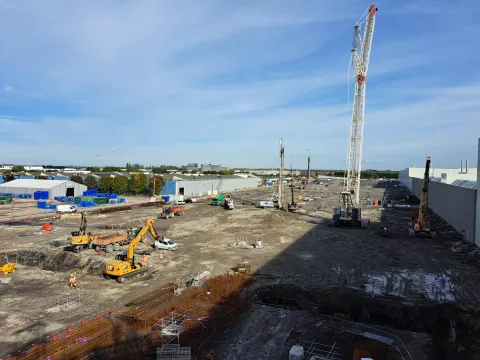
This second block, adjoining the first, has similar overall dimensions: 626 metres long, 95 metres wide, and up to 35 metres high. Throughout the building, the roof elevation will be slightly different from that of Block 1: "Unlike the first block, here it's all new. There's no integration of an existing building," explains Louis-Marie Michon, Project Manager Building Block 2.
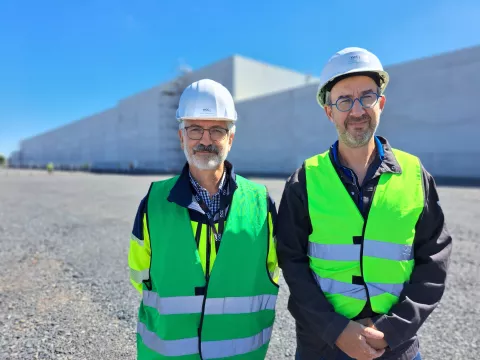
The platform housing the second block required several months of preparation. It is now ready to receive the site machinery in the best possible conditions. The site was cleared to a depth of 1.50 m. Concrete "souvenirs" of the former industrial occupation have been removed.
Construction of the second block (the entire building is supervised by Laurent Schotté, Project Management Officer) begins with the installation of concrete piles. These will support the future columns that will form the structure of the building. To do this, a machine digs into the ground with an auger. "The auger brings up the earth, we replace it with concrete and force in a cage of reinforcement", summarizes Louis-Marie Michon. Each pole is driven to a depth of up to twenty meters.
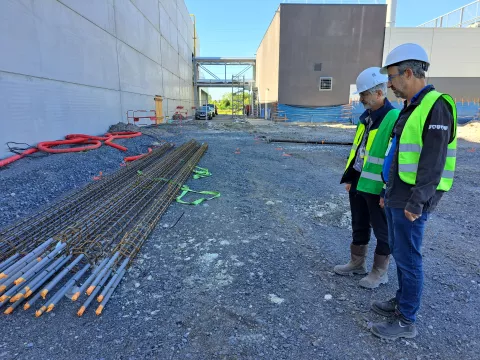
Two shaft creation workshops are deployed on site, requiring two machines. The system is completed by two lifting cranes: one is a tower crane with a 70-metre jib and a hook height of 43 metres. The other is a 400-tonne crawler crane from the Netherlands. Twenty semi-trailers were needed to bring it in parts, before assembling it on site. This one will be able to lift the concrete columns up to 50 tonnes and 40 metres high each.

The construction plan for the second block of the Gigafactory calls for 1,600 foundation poles to be driven into the ground, on which 350 posts will be placed. To date, over 700 piles have been anchored in the ground. Concrete pedestals are then built on top of the piles. A pedestal can weigh up to 40 tonnes. Depending on the location and future constraints of the building, the columns will be fixed or plugged onto these pedestals.
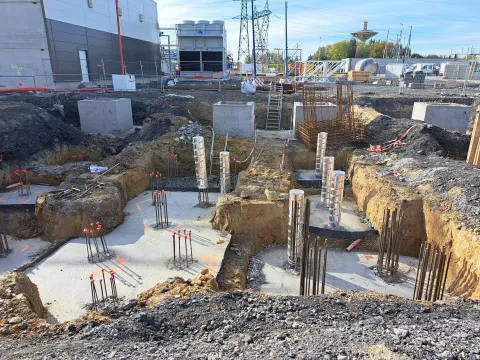
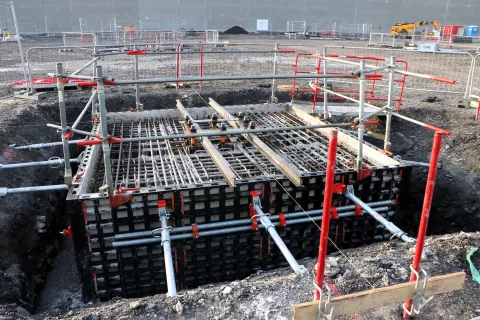
Closer to Block 1, construction crews are raising the first of the two elevator shafts, using the slipform technique. The formwork is raised as the concrete walls are poured, at a rate of 15 centimetres per hour. This will enable the first 34-metre-high shaft to be raised in two weeks.
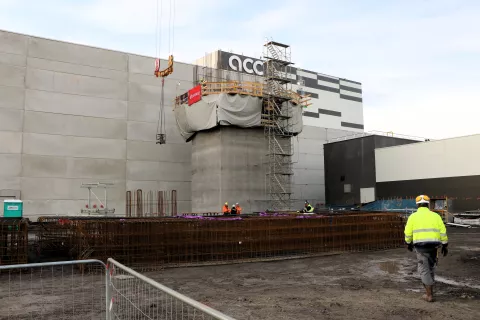
The entire construction site for the second block employs around one hundred people, with around 80 on site at any one time.
Commissioning of the second block of the Billy-Berclau Douvrin Gigafactory is scheduled for 2025.
